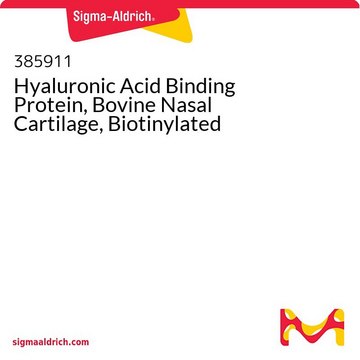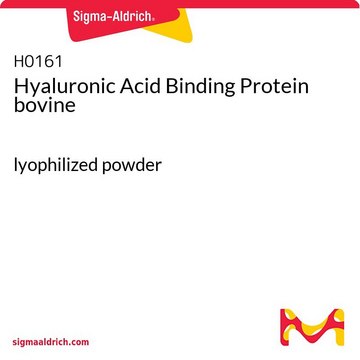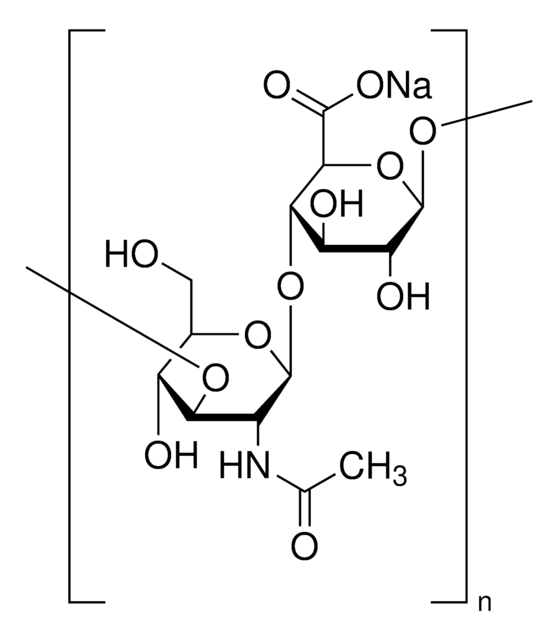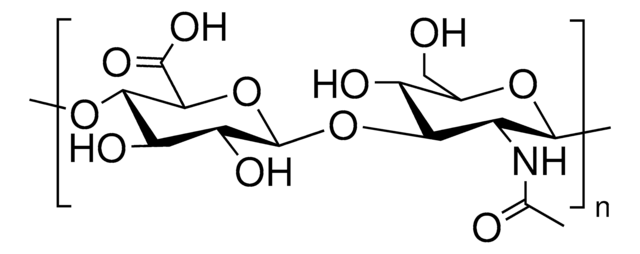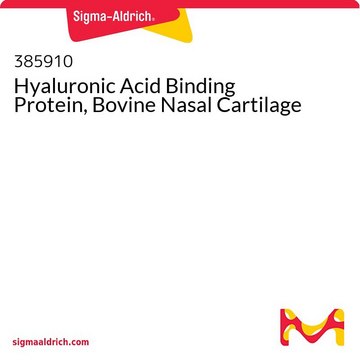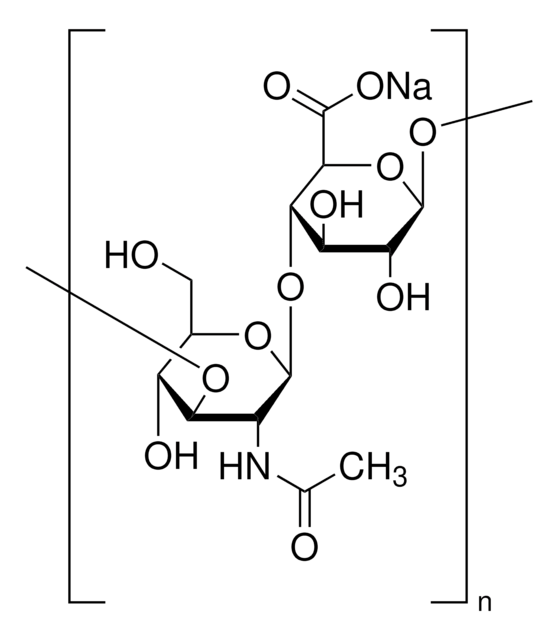H9910
Hyaluronsäure-bindendes Protein−Biotin Rind
lyophilized powder
Synonym(e):
HABP-Biotin
Anmeldenzur Ansicht organisationsspezifischer und vertraglich vereinbarter Preise
Alle Fotos(1)
About This Item
Empfohlene Produkte
Form
lyophilized powder
Qualitätsniveau
UniProt-Hinterlegungsnummer
Lagertemp.
−20°C
Angaben zum Gen
cow ... VCAN(282662)
Anwendung
Hyaluronsäure-bindendes Protein-Biotin von Rindern wird in der Immunhistochemie von menschlichen Knochenmarkproben zum Nachweis von Hyaluronsäure eingesetzt. Es wird zum Nachweis von Hyaluronan in Xenopus-Kaulquappen eingesetzt.
Biochem./physiol. Wirkung
Kann nützlich für den Nachweis von Hyaluronsäure sein.
Physikalische Form
Enthält 1 % Rinderserumalbumin, 0,85 % NaCl und 0,125 % Natriumphosphat.
Hinweis zur Analyse
Mehrere Bänder auf SDS-PAGE
Lagerklassenschlüssel
11 - Combustible Solids
WGK
WGK 2
Flammpunkt (°F)
Not applicable
Flammpunkt (°C)
Not applicable
Hier finden Sie alle aktuellen Versionen:
Besitzen Sie dieses Produkt bereits?
In der Dokumentenbibliothek finden Sie die Dokumentation zu den Produkten, die Sie kürzlich erworben haben.
Kunden haben sich ebenfalls angesehen
Esteban G Contreras et al.
Development (Cambridge, England), 136(17), 2987-2996 (2009-08-12)
Tail regeneration in Xenopus tadpoles is a favorable model system to understand the molecular and cellular basis of tissue regeneration. Although turnover of the extracellular matrix (ECM) is a key event during tissue injury and repair, no functional studies to
Chung-Hao Lu et al.
PloS one, 8(8), e74602-e74602 (2013-09-12)
The serpin peptidase inhibitor, clade E, member 2 (SERPINE2) inhibits urokinase-type plasminogen activator (PLAU) and tissue-type plasminogen activator. Higher SERPINE2 expression levels were detected in cumulus cells of human immature oocytes than in those of mature oocytes. The objective of
J Melrose et al.
Electrophoresis, 17(1), 205-212 (1996-01-01)
Hyaluronan influences cellular proliferation and migration in developing, regenerating and remodelling tissues and in tissues undergoing malignant tumour-cell invasion. The widespread occurrence of hyaluronan-binding proteins indicates that the recognition of hyaluronan is important to tissue organisation and the control of
Abraham Avigdor et al.
Blood, 103(8), 2981-2989 (2004-04-09)
Trafficking of human CD34+ stem/progenitor cells (HSCs/HPCs) is regulated by chemokines, cytokines, proteolytic enzymes, and adhesion molecules. We report that the adhesion receptor CD44 and its major ligand, hyaluronic acid (HA), are essential for homing into the bone marrow (BM)
G Perides et al.
The Journal of biological chemistry, 264(10), 5981-5987 (1989-04-05)
A glial hyaluronate-binding protein (GHAP) with an isoelectric point of 4.3-4.4 was isolated from human brain white matter. The 60-kDa glycoprotein appeared to be quite resistant to proteolysis, and comparison with GHAP from a viable glioma removed at surgery showed
Unser Team von Wissenschaftlern verfügt über Erfahrung in allen Forschungsbereichen einschließlich Life Science, Materialwissenschaften, chemischer Synthese, Chromatographie, Analytik und vielen mehr..
Setzen Sie sich mit dem technischen Dienst in Verbindung.